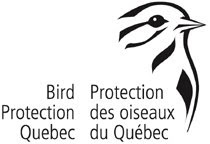A total of 30 species were seen in the arboretum - as follows: Canada Goose 500, Cooper's Hawk 1, Red-tailed Hawk 1, Ring-billed Gull 200, Mourning Dove 6, Yellow-bellied Sapsucker 1, Downy Woodpecker 4, Hairy Woodpecker 2, Northern Flicker 1, Pileated Woodpecker 3, Blue Jay 50, American Crow 30, Common Raven 1, Black-capped Chickadee 20, Red-breasted Nuthatch 1, White-breasted Nuthatch 5, Brown Creeper 1, Golden-crowned Kinglet 10, Ruby-crowned Kinglet 40, Swainson's Thrush 1, Hermit Thrush 3, American Robin 50, European Starling 25, Cedar Waxwing 16, Yellow-rumped Warbler 3, Chipping Sparrow 6, White-throated Sparrow 15, Dark-eyed Junco 15, Red-winged Blackbird 6, American Goldfinch 2
Bernache du Canada 500, Épervier de Cooper 1, Buse à queue rousse 1, Goéland à bec cerclé 200, Tourterelle triste 6, Pic maculé 1, Pic mineur 4, Pic chevelu 2, Pic Flaboyant 1, Grand Pic 3, Geai bleu 50, Corneille d'Amérique 30, Grand Corbeau 1, Mésange à tête noire 20, Sittelle à poitrine rousse 1, Sittelle à poitrine blanche 5, Grimpereau brun 1, Roitelet à couronne dorée 10, Roitelet à couronne rubis 40, Grive à dos olive 1, Grive solitaire 3, Merle d'Amérique 50, Étourneau sansonnet 25, Jaseur d'Amérique 16, Paruline à croupion jaune 3, Bruant familier 6, Bruant à gorge blanche 15, Junco ardoisé 15, Carouge à épaulettes 6, Chardonneret jaune 2
Around 10:30 all but three of the original group set off to investigate the birding possibilities of the fields south of Cap-St-Jacques. This is a largely unexplored area of abandoned fields that is thoroughly overgrown and pretty well without any trails other than those created by the deer. For that reason, it is quite and undisturbed and so there is a good and a rich wildlife to try to find. The sole exception is a small aerodrome for flyers of model aircraft that seemed to be roaring business but we we were pleased to note that the loud and zooming "hawks" overhead seemingly had no effect whatsoever on the birds who tended to ignore them altogether, perhaps knowing that real hawks don't fly that fast.
After leaving the access road to the model aerodrome we started bushwhacking our way across the abandoned fields and through thickets of dogwood and buckthorn with a soupçon of willow and chest high grasses and milkweed. Everyone knew what to expect though and there were no complaints expressed (well, not to me anyway. Everyone is so polite.) But we were BPQ birders - we can do this stuff.
I did find a comment on Bushwhacking that those who were out this morning might find appropriate … "Vegetation is not quite your friend, not quite your enemy. You will sometimes grab branches to pull yourself uphill, hold them to lower yourself down gullies, and hang on for balance. Sometimes they will hit you in the face. You will pull thorns out of your hands and thighs. You will accidentally break branches, and other branches will repeatedly untie your shoelaces. Do not show remorse or fear. Plants can smell weakness, and they will team up on you like an NFL defensive line until they bring you down. You are better than them. That is why we have a dish called “salad.”
Birds seen at this second site, necessarily fewer in number if only because of the later time and the hot sun, were as follows:
Great Blue Heron 1, Red-tailed Hawk 2, Ring-billed Gull 1, Merlin 1, American Crow 3, Ruby-crowned Kinglet 12, American Robin 10, Yellow-rumped Warbler 9, Song Sparrow 6, White-throated Sparrow 8, White-crowned Sparrow 1, Dark-eyed Junco 8, Red-winged Blackbird 1, Common Grackle 1
Grand héron 1, Buse à queue rousse 2, Goéland à bec cerclé 1, Faucon émerillon 1, Corneille d'Amérique 3, Roitelet à couronne rubis 12, Merle d'Amérique 10, Paruline à croupion jaune 9, Bruant chanteur 6, Bruant à gorge blanche 8, Bruant à couronne blanche 1, Junco ardoisé 8, Carouge à épaulettes 1, Quiscale bronzé 1
Total species for the day = 32
My thanks to everyone who came for being cheerful and knowledgeable and for sticking the course to the end - by doing so we discovered a bird-rich area that should be explored in greater detail during the next spring migration. A welcome too, to Danielle from the Laurentides birding club who joined us today as her club had nothing organised.
Happy Thanksgiving
Richard





No comments:
Post a Comment